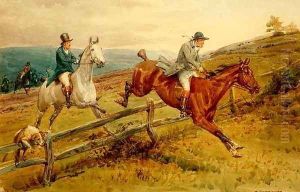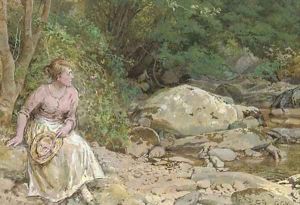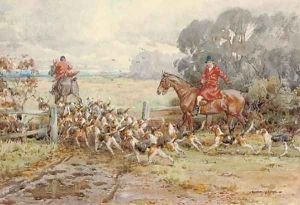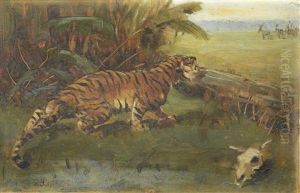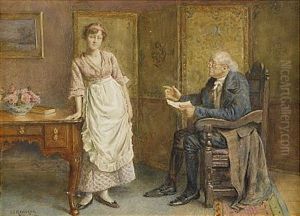George Goodwin Jnr Kilburne Paintings
George Goodwin Kilburne Jr. was a distinguished British painter known for his exquisite watercolor and oil paintings, primarily focusing on genre scenes that vividly depicted Victorian and Edwardian society. Born on July 24, 1839, in Norfolk, England, Kilburne demonstrated an early talent for art, which led him to pursue a career that spanned over 60 years, leaving behind a legacy that has been celebrated for its detailed depiction of the leisurely activities and domestic life of his era.
Kilburne received his artistic training at the age of 15 when he was apprenticed to the Dalziel Brothers, engravers and illustrators, in London. This experience provided him with a solid foundation in the technical aspects of drawing and engraving, skills that he would later apply to his watercolor and oil paintings. In 1863, he decided to focus on his painting career and began exhibiting his work at prestigious institutions such as the Royal Academy, the Royal Institute of Painters in Water Colours, and the Royal Society of British Artists, among others.
Throughout his career, Kilburne was known for his meticulous attention to detail, vibrant use of color, and the ability to capture the nuances of social interactions. His works often featured elegantly dressed figures in leisurely pursuits, from horseback riding and hunting to more serene activities such as reading and music-making within ornate interiors. These scenes not only provide a glimpse into the leisurely pastimes of the upper classes but also reflect the societal norms and fashions of the time.
Kilburne's paintings were highly sought after during his lifetime and continue to be appreciated by collectors and art enthusiasts today. His contribution to British art is also recognized by his election as a member of the Royal Institute of Painters in Water Colours in 1866, a testament to his skill and the high regard in which he was held by his contemporaries.
George Goodwin Kilburne Jr. passed away on January 13, 1924. His legacy endures through his captivating portrayals of Victorian and Edwardian society, offering a window into the past that continues to enchant and inform. His work remains a valuable resource for those interested in the social history and art of the period, ensuring his place in the annals of British art history.
